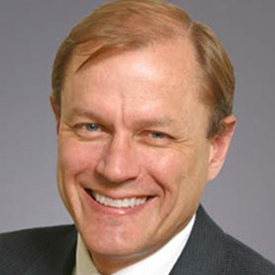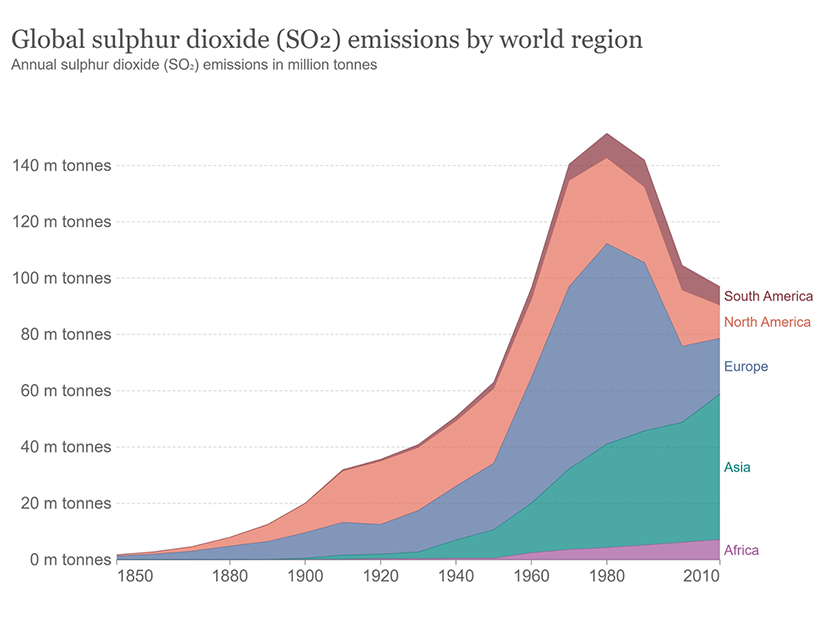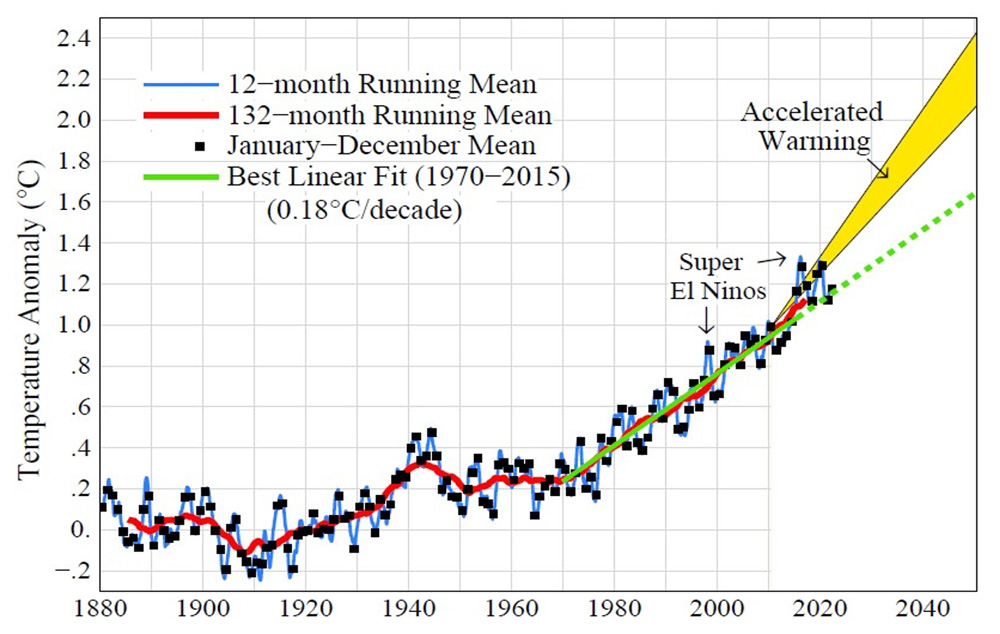The Commerce Department on Friday announced its final decision to impose tariffs on solar cells and panels imported from Cambodia, Malaysia, Thailand and Vietnam, finding that some Chinese manufacturers are shipping their products through the four countries to avoid paying tariffs called “antidumping and countervailing duties” (AD/CVD).
Confirming a preliminary decision from December 2022, Friday’s ruling found that of eight companies operating in the countries, five “were attempting to avoid payment by completing minor processing in third countries, and that three companies were not circumventing.” The three noncircumventors are Hanwha Q CELLS and Jinko Solar, both with facilities in Malaysia, and Boviet Solar in Vietnam.
The circumventing companies are BYD Hong Kong and New East Solar in Cambodia; Canadian Solar and Trina Solar in Thailand; and Vina Solar in Vietnam. Other solar manufacturers in these countries, though not part of the official investigation, also were found to be circumventing.
Hanwha is the No. 1 panel provider in the U.S. market, according to industry analysts Wood Mackenzie, while Jinko, Canadian and Trina also are in the top 5, which in 2022 accounted for 50% of the U.S. market.
President Joe Biden declared a two-year moratorium on the tariffs in June 2022, which means the Commerce decision will not go into effect until June 2024. Following a congressional resolution seeking to roll back the moratorium in May, Biden also stated he does not intend to extend the moratorium. (See Biden Veto Upholds 2-year Moratorium on Solar Tariffs.)
No tariffs will be imposed on any solar imports from the four countries until June 2024, providing that any products from the four countries “are consumed in the U.S. market within six months” of the end of the moratorium, according to Commerce’s announcement.
“This provides U.S. solar importers with sufficient time to adjust supply chains and ensure that sourcing is not occurring from companies found to be violating U.S. law,” the department said.
The solar industry quickly criticized the decision, arguing that it undercuts the administration’s efforts to increase solar deployment as part of its fight against climate change.
The department’s investigation was based on a complaint from a U.S. solar manufacturer, Auxin Solar, that was “meritless from the beginning,” Abigail Ross Hopper, CEO of the Solar Energy Industries Association (SEIA), said in a statement released Friday.
“The inquiries have caused uncertainty in the U.S. market at a time when solar energy is on the rise. The final affirmative determinations only perpetuate current supply problems, given the lack of adequate domestic supply of cells and modules,” Hopper said.
While noting that clean energy manufacturing incentives in the Inflation Reduction Act (IRA) have driven a “$20 billion solar manufacturing renaissance” in the U.S., “it will take at least three to five years to ramp up domestic solar manufacturing capacity, and the global supply chain will be vital in the short term,” she said. “This case will just make it harder for American businesses to keep deploying, financing and installing solar power.”
Gregory Wetstone, CEO of the American Council on Renewable Energy, lamented that the Commerce decision comes just days after Biden had celebrated the first anniversary of the IRA at the White House. The decision “directly undermines Biden administration efforts to accelerate the deployment of renewable energy and address climate change,” Wetstone said. “The policy whiplash now being inflicted on the U.S. solar industry is incredibly disruptive and will only delay our nation’s clean energy progress.”
“Our collective focus should be on fostering smart policies that accelerate clean energy deployment nationwide,” said George Hershman, CEO of SOLV Energy, a utility-scale solar contractor. “Detrimental trade barriers like this one run counter to our efforts to meet deployment goals while the industry capitalizes on the incentives provided in the Inflation Reduction Act to boost domestic manufacturing and grow our national supply chain.”
Mamun Rashid, CEO of Auxin, previously has defended his company’s complaint to the Commerce Department, saying Chinese imports are an “existential” threat to its business, according to a CNN report.
“When prices of finished panels from Southeast Asia come in below our bill of materials cost, American manufacturers cannot compete,” Rashid said. “If foreign producers are circumventing U.S. law and causing harm to U.S. producers like Auxin Solar, it needs to be addressed.”
Carrots and Sticks
The Commerce decision highlights the conflict between the U.S. solar industry’s ambitious targets for market growth and its ongoing dependence on foreign — specifically Chinese — manufacturers for its key components.
A 2022 Energy Department report found that 97% of silicon wafers, an essential component of solar panels, are manufactured in China, and 75% of the silicon solar cells built into panels installed in the U.S. come from Malaysia, Thailand or Vietnam.
Also, the industry has been hobbled by the Uyghur Forced Labor Prevention Act (H.R. 6256), passed in 2021, which prohibits the import into the U.S. of any goods produced in China using forced labor. This year, U.S. Customs and Border Protection was holding a major backlog of solar imports under the law, hitting hard at solar developers and causing project delays, according to an Axios report.
Both sides of the aisle in Congress have been taking a harder line on China, and ClearView Energy Partners sees Friday’s decision as in line with Commerce’s “protectionist leanings … irrespective of political polarities.”
The department first slapped tariffs on Chinese solar panels in 2012, during the Obama administration, siding with U.S. solar companies that argued that Chinese companies, heavily subsidized by their government, were undercutting domestic manufacturers and dumping cheaper panels in the U.S. market. AD/CVD tariffs — from 31 to 250% at the time — were intended to level the playing field and spur the buildout of a domestic supply chain, they argued. (See Solar Industry Slams Commerce Decision Extending Solar Tariffs.)
Over the next decade, solar manufacturing migrated to Cambodia, Malaysia, Thailand and Vietnam, and U.S. tariffs failed to catalyze a homegrown supply chain. In 2018, President Donald Trump expanded the Chinese tariffs to the four Southeast Asian countries.
Biden decided in February 2022 to continue the tariffs but instituted the two-year moratorium after Commerce opened the investigation of the Auxin complaint. In an April 2023 policy statement, the White House said the moratorium was intended as “a short-term bridge to ensure there is a thriving U.S. solar installation industry ready to purchase the solar products that will be made in these American factories” built with incentives from the IRA.
Jason Grumet, CEO of the American Clean Power Association, said his organization has counted 52 new or expanded solar manufacturing facilities announced since passage of the IRA. But the majority of the announcements are for plants that will make panels or related system components, not the silicon wafers and cells to replace the Chinese supply chain.
Hanwha, a Korean company, announced in January it would invest $2.5 billion to expand its manufacturing capacity in the U.S. Similarly, Jinko is putting $52 million into expanding its U.S. plant in Jacksonville, Fla.
CubicPV, a U.S.-based company with backing from Bill Gates’ Breakthrough Energy Ventures, is planning a U.S. facility to produce wafers. NorSun, a Norwegian wafer and ingot manufacturer, also has announced plans for a 5-GW U.S. plant.
ClearView believes the U.S. solar industry will continue to have a lopsided supply chain even as the market continues to grow. SEIA estimated that the U.S. industry had about 7.5 GW per year of panel manufacturing capacity at the end of 2021, a figure that could triple by 2024 with incentives from the IRA, according to the White House.
But the Energy Information Administration is estimating solar deployments of more than 39 GW this year alone, which ClearView says will leave the industry still dependent on imports, with further help from Biden unlikely.
Writing ahead of Friday’s announcement, ClearView said, “The Biden administration may view new and expanded renewable power tax credits as sufficient ‘carrots’ to offset a possible affirmative AC/CVD circumvention determination ‘stick.’”







